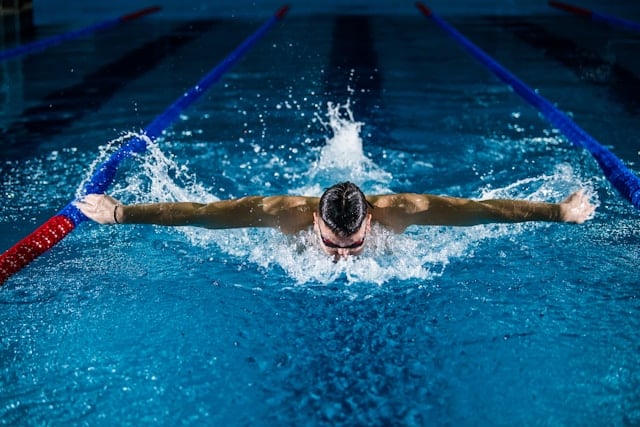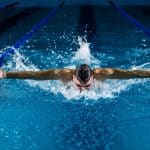The link between nutrition, physical performance, and recovery in athletes has long been established. However, the complex web of interactions between these elements is a topic of ongoing research. A critical factor in this equation is oxidative stress, a condition that can negatively affect an athlete’s performance and recovery. Within this context, we will explore the role of oxidative stress markers in customizing antioxidant intake specifically for swimmers. We’ll examine the effects of oxidative stress on the body during exercise, what science has revealed about mitigating these effects, and how this knowledge can be applied to the training regimen of swimmers.
Oxidative Stress and Exercise: The Science Behind it
When you engage in exercise, your body’s metabolism accelerates, leading to an increased production of reactive oxygen species (ROS). These by-products could potentially damage cell structures, leading to oxidative stress. According to several studies indexed on Google Scholar and PubMed, the impact of ROS on cells can result in muscle fatigue and hinder recovery post-exercise.
Avez-vous vu cela : How Can Adaptive Feedback Loops Enhance Training Efficiency in Elite Sprinters?
Prolonged periods of training can further exacerbate the production of ROS, leading to sustained oxidative stress. A study published in J Appl Physiol showcased this phenomenon. In the study, athletes who underwent prolonged exercise had significantly higher levels of ROS and markers of muscle damage.
Interestingly, a certain level of ROS is beneficial for regular cell signaling and adaptation to exercise. It’s when the production of ROS outweighs the body’s antioxidant defense capacity that we see the detrimental effects of oxidative stress.
Sujet a lire : What’s the Best Approach to Building Mental Resilience in Youth Basketball Teams?
The Role of Antioxidants in Counteracting Oxidative Stress
Antioxidants are molecules that can neutralize ROS, thereby reducing oxidative stress and its associated damage. The body produces some antioxidants, such as Superoxide Dismutase (SOD), but many are acquired through diet. Foods rich in vitamins A, C, and E, selenium, and certain phytochemicals are excellent sources of antioxidants.
Research studies, available on platforms like Crossref and Google Scholar, suggest that antioxidant supplementation can help mitigate exercise-induced oxidative stress. In a study referenced in Eur J Appl Physiol, athletes who took antioxidant supplements had lower levels of oxidative stress markers and reported improved recovery times.
However, the effectiveness of antioxidant supplements is not uniform across all athletes. The type of sport, intensity, and individual nutritional needs all play a significant role. This brings us to the importance of customizing antioxidant intake for athletes, particularly swimmers—endurance athletes who engage in intensive, prolonged training sessions.
Customizing Antioxidant Intake for Swimmers
Swimming is a high-intensity sport that requires sustained effort and energy, thereby increasing the production of ROS. As a result, swimmers may have a higher risk of developing oxidative stress, which can impede their performance and recovery.
Customizing antioxidant intake based on oxidative stress markers might optimize a swimmer’s performance and recovery. Remember, overconsumption of antioxidants can be equally harmful, as it can disrupt the body’s natural ROS-antioxidant balance.
Several research articles suggest that measuring oxidative stress markers before and after training can help determine the appropriate antioxidant intake for swimmers. For instance, the level of certain enzymes, such as SOD, can be indicative of the body’s oxidative state.
Practical Steps for Swimmers and Coaches
Based on the understanding of oxidative stress and its impact on the body, here are some practical steps for swimmers and their coaches.
Firstly, regular testing for oxidative stress markers can help monitor the body’s oxidative state. Simple blood tests can provide this information, and it can be analyzed to customize the swimmer’s antioxidant diet or supplements.
Also, incorporating antioxidant-rich foods into the swimmer’s diet is crucial. Foods such as berries, nuts, dark chocolate, spinach, and carrots are just a few examples.
Lastly, it is essential to note that antioxidant supplementation should not replace a balanced diet. Instead, it should complement a swimmer’s diet and meet the increased antioxidant demand due to intensive training.
Informed Decisions for Better Performance
Understanding the role of oxidative stress markers in exercise and recovery is vital for athletes, especially swimmers. It helps them make informed decisions about their diet and supplement intake.
Although more research is needed to fully understand the mechanisms of oxidative stress and its impact on athletic performance, the current body of knowledge provides a strong foundation. Remember, the goal is not to eliminate ROS completely, but to maintain a healthy balance between ROS and antioxidants, optimizing performance and recovery.
Integrating Oxidative Stress Markers into Training Programs
To mitigate the impact of oxidative stress on swimmers, coaches and trainers can incorporate regular testing for oxidative stress markers into their training programs. Such an approach allows for the customization of antioxidant intake based on the individual needs of each swimmer.
Several studies available on platforms like Google Scholar and PubMed highlight the benefits of tailoring antioxidant intake to an athlete’s oxidative stress levels. For instance, a view article in J Appl Physiol showed that swimmers who integrated customized antioxidant diets into their training programs had improved recovery times and enhanced performance.
As a concrete example, consider lipid peroxidation, an oxidative stress marker. By measuring levels of lipid peroxidation before and after exercise, coaches can gain insights into the swimmer’s oxidative state. If lipid peroxidation levels are high post-exercise, it could signal the need for increased antioxidant intake.
There are several oxidative stress markers, such as SOD and lipid peroxidation, which can be measured via simple blood tests. While this may sound complicated, it’s a straightforward process that can be seamlessly integrated into an athlete’s routine check-up.
Antioxidant-rich Foods and Supplements for Swimmers
In addition to regular testing, it’s crucial that swimmers maintain a diet rich in antioxidants. Foods high in vitamins A, C, and E, selenium, and certain phytochemicals can help combat excessive ROS. For example, berries, nuts, dark chocolate, spinach, and carrots are all antioxidant-rich foods that should be included in a swimmer’s diet.
While the importance of a balanced diet cannot be overstated, there is also a place for antioxidant supplements in an athlete’s nutritional regimen. Supplements can prove beneficial in situations where dietary intake is insufficient or when physical activity levels are exceptionally high, such as during intensive training periods or high altitude training.
The key takeaway here is that both diet and supplements play a vital role in managing oxidative stress in swimmers. However, the decision to use supplements should be made cautiously, ideally under the supervision of a dietitian or medical professional.
Conclusion: Striking the Right Balance
In conclusion, the role of oxidative stress markers in customizing antioxidant intake for swimmers is an area of ongoing research. However, the current body of knowledge suggests that maintaining a balance between ROS and antioxidants is crucial for optimized performance and recovery.
Regular testing for oxidative stress markers provides insights into a swimmer’s oxidative state, thereby informing decisions about antioxidant intake. A balanced, antioxidant-rich diet, possibly supplemented with additional antioxidants, can help mitigate the effects of exercise-induced oxidative stress.
Remember, it’s all about balance. Overconsumption of antioxidants can disrupt the body’s natural ROS-antioxidant equilibrium. Therefore, it’s vital to customize antioxidant intake based on oxidative stress levels, ensuring that swimmers have the right resources for recovery and performance optimization.
The integration of oxidative stress markers into training programs, along with a balanced diet and judicious use of supplements, can help athletes manage oxidative stress, ultimately leading to improved performance and faster recovery. This approach empowers swimmers to make informed decisions about their nutrition, fostering a healthier relationship with food and supplementation.











